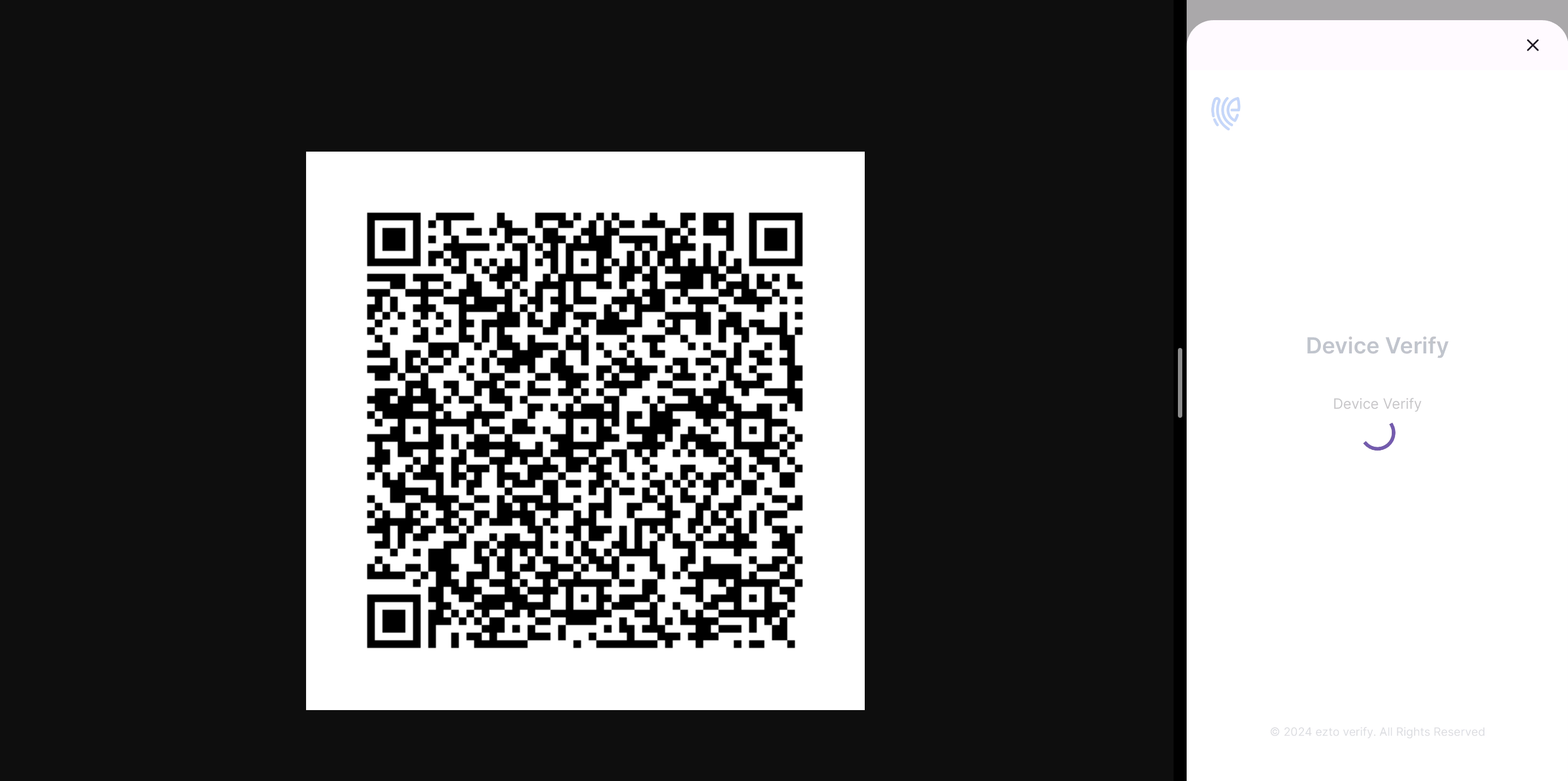Device Verify
Device Verify helps confirm the identity of a specific device for a particular user, ensuring that the device is authorized to access the user's account.
This flow supports both Mobile and Desktop applications.
Prerequisites
- Download the ezto verify mobile app before proceeding with the flow.
- Before proceeding with this flow, ensure you have completed the Device Register flow as it is mandatory.
How to Setup
1 Navigate to Workspace > Workflows, and click on the flow created for Device Verify. If you need understanding in creating a workflow, refer to the step-by-step guide here.
2 Hover over the plus (+) symbol and select Workflow. From the list, click Device Verify to add it.

3 Click on the newly added workflow, then select the General tab to customize your preferences.

Manage General
(*) Indicates an action to be mandatory.
| Name | Description |
|---|---|
| Display Name* | Set a name to the workflow for easy identification. |
| Description | Summarize the purpose and functionality of this workflow module. |
| Enable | This toggle is enabled by default. When enabled, the particular workflow module begins its execution. Conversely, if disabled, the workflow module remains inactive and won't proceed. |
| Rule | This determines the criteria for triggering the particular workflow module. When the selected rule is evaluated, and is satisfied, the workflow proceeds as provided. If not, the workflow will not be executed. Note: If no rules are set, the workflow defaults to its standard action without any rule. For more information about the rules, refer here. |
4 After you've configured everything needed, click on SAVE.
5 Proceed to attach the workflow to the relevant application for execution. Refer to the instructions on how to attach a workflow to an application here.
Expected Result
Based on the provided configuration, the information that will be fetched for Device Verify includes the following parameters:
| Name | Description |
|---|---|
device_verified | This denotes whether the device verification is completed. The value will be "True" if the verification is successfully completed and "False" if it is not. |
device_verified_at | This provides a timestamp, in Unix epoch format, indicating the exact time when the device verification was completed. This allows you to know precisely when the verification event occurred. |
The response received will include the accurate information mentioned above. Note that, the response values can vary depending on the specific workflow modules.
How it Works
1 Launch Postman or your preferred API tool and execute the flow by configuring the suitable Method, URL, and Body settings. If you're seeking guidance on how to perform these actions, see here.
Make sure to configure the
"allow_new_device": truein the body of the respective API.
2 Upon initiating the API call, a verification request will be sent to your configured Verification Way (Mobile) settings.
3 Based on the request, execute the flow in an incognito browser and follow the prompts to complete the verification process.
4 Begin by scanning the QR code with the ezto verify mobile app.
This depends on what you have configured for the mobile notification way, i.e, QR code or Push integration. To know the difference between QR code or Push, refer here.

5 Once you scan the QR code, it will take a few seconds to verify the new device.

6 The process will be completed and the device will be verified successfully.

7 The response can differ depending on the chosen Verification Way and Notification Way configurations. To know more, see here.
8 Here is a sample response for Device Verify:
{
"workflow": "verification",
"user_id": "mark@gmail.com",
"request_id": "xxxxxxxx-xxxx-xxxx-xxxx-xxxxxxxx",
"device_verified": "true/false",
"device_verified_at": "1719569072"
}